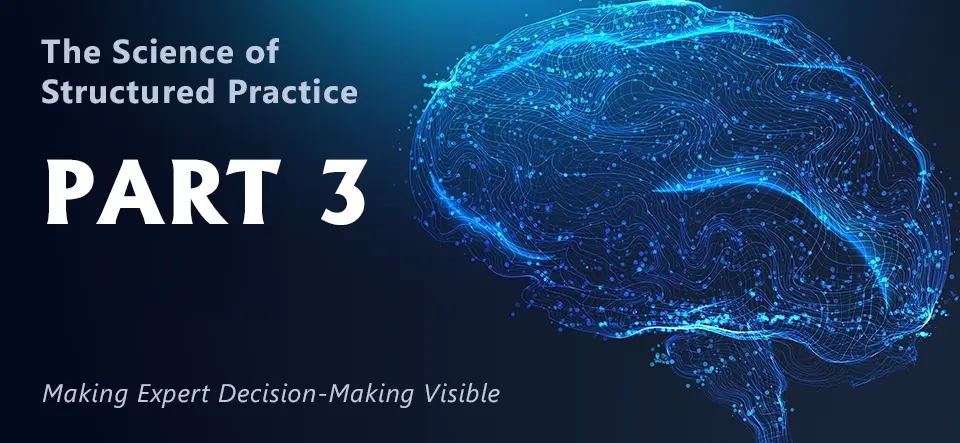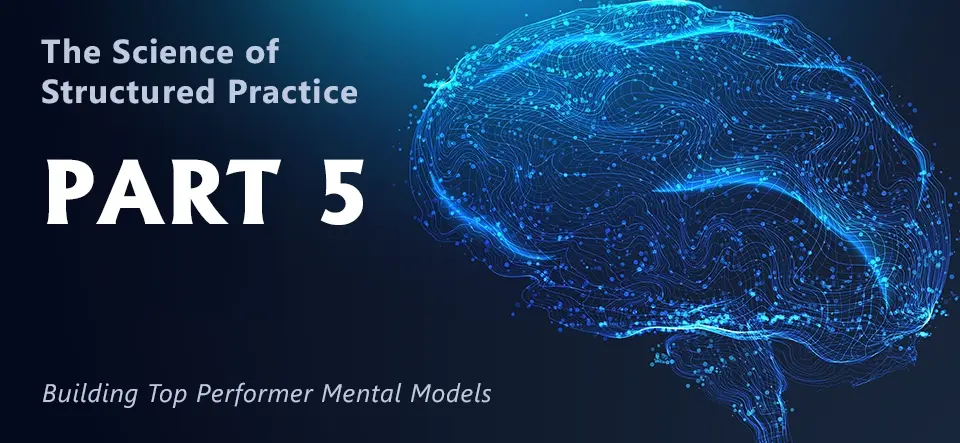
Your top performers likely excel in two critical ways: They adapt their approach based on each situation rather than using a one-size-fits-all strategy, and they confidently apply new approaches even when situations don't perfectly match their training.
Here we'll explore how cognitive flexibility principles and structured practice, delivered through immersive simulation technology, help teams develop this crucial capability by exposing them to the ways top performers adapt to different situations.
The Adaptation Challenge
Consider these common scenarios: A sales leader sees their team use the same discovery questions regardless of buyer signals; a physician hesitates to try a new treatment approach because the patient's situation doesn't exactly match the case studies; and a manager rigidly applies standard coaching techniques even when they're clearly not working.
| The impact is significant. Teams applying one-size-fits-all approaches miss opportunities to close deals because they don't adapt to different stakeholder needs. They fail to optimize treatment because they don't adjust for patient variations. And they struggle to develop team members because they don't flex their coaching style. |  |
| Even worse, when professionals do recognize the need to adapt, they often lack the confidence to try something new in live situations. They know the standard playbook isn't working, but worry about making mistakes that could embarrass them or harm others. |  |
| The solution lies in understanding how top performers develop their adaptability, then building this capability systematically through structured practice in interactive simulation environments. |
Understanding Flexible Decision-Making
As cognitive scientist Dr. Rand Spiro explains:
"Cognitive Flexibility is about preparing people to select, adapt, and combine knowledge and experience in new ways to deal with situations that are different than the ones they have encountered before."
This insight reveals why both rigid approaches and hesitation with new situations hold teams back - and points to the solution.
Through structured practice in immersive learning environments, we can systematically develop this adaptability in two complementary ways:
- Flexible Depth: Mastering variations of similar situations to recognize when and how to adapt
- Flexible Breadth: Building the capability to handle different types of situations confidently
Let's see how organizations use these approaches to develop more adaptive performers.
Flexible Depth: Mastering Situation Variations
| Often we face the same decision point but different situations require different optimal options. |  |
Consider a sales leader at the critical "discuss budget" decision point. While the available options remain the same, which ones are optimal varies significantly based on the situation:
- Is budget a genuine constraint or a negotiating tactic?
- Does the prospect understand the full cost of their current approach?
- How does their decision-making process work?
Similarly, a physician facing a treatment decision where standard therapies and new therapy are options, must consider their specific patient situation: medical history and risk factors, previous treatment responses, and personal preferences and lifestyle factors.
This is where flexible depth comes into play. By practicing the same decision points across different situations in interactive learning environments, learners develop recognition of which situation they're actually in, confidence in selecting optimal options, and understanding of why different situations call for different approaches.
Through simulation-based structured practice, we expose learners to these variations systematically. Rather than learning through trial and error in live situations, they:
|
|
Flexible Breadth: Handling Different Situations
| While flexible depth helps master variations of the same decision point, many roles require handling completely different types of decisions. |  |
Consider a sales leader who needs to:
- Recognize whether a prospect is an innovator or a conservative buyer
- Determine if a deal requires executive sponsorship
- Decide when to bring in technical resources
- Assess whether to pursue an opportunity
Similarly, physicians must evaluate disease progression stages, determine differential diagnoses, decide on immediate treatment versus monitoring, and consider specialist referrals.
This is where flexible breadth comes into play. By practicing different types of decisions in immersive scenarios, learners develop quick recognition of situations, confidence in applying the right decision frameworks, and the ability to shift approaches as needed.
Through structured practice technology, we systematically expose learners to these different scenarios. Rather than waiting to encounter each situation for the first time in the field, they:
|
|
Measuring Adaptability
Great coaches have always known that developing adaptable decision-making is key to better performance. The challenge has been developing this capability systematically across teams. Structured practice with immersive technology makes this possible.
Organizations see this impact through:
|
Top performers maintain excellence because they recognize patterns and adapt effectively. Through structured practice embedded in simulation technology, organizations can now develop this same adaptability across their teams.
Looking Ahead
While cognitive flexibility helps us adapt to different situations, the foundation of this adaptability lies in robust mental models. In our final article of this series, we'll explore how these mental models develop and why they're crucial for sustained high performance. We'll see how structured practice brings together all the elements we've discussed to create lasting performance improvement.
References
- Spiro, Rand J., et al. "Cognitive Flexibility Theory: Hypermedia for Complex Learning, Adaptive Knowledge Application, and Experience Acceleration." Educational technology 43.5 (2003): 5-10.
- Collins, Allan, et al. "Cognitive apprenticeship: Making thinking visible." American Educator 15.3 (1991): 6-11.
- Stalmeijer, R.E., et al. "Cognitive apprenticeship in clinical practice: can it stimulate learning in the opinion of students?" Advances in Health Sciences Education, 2009.



